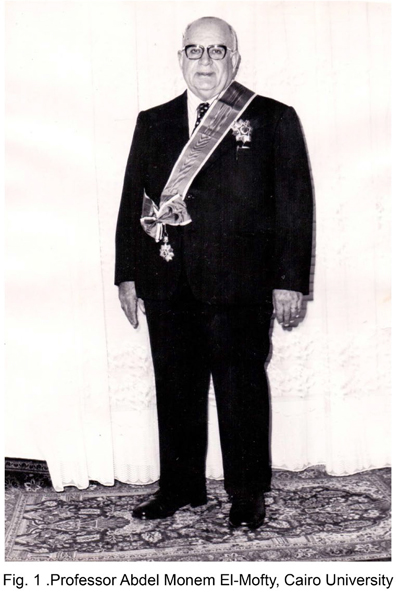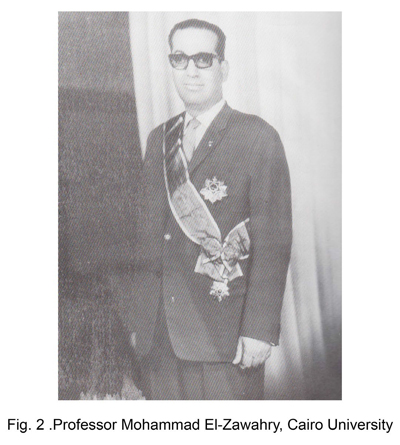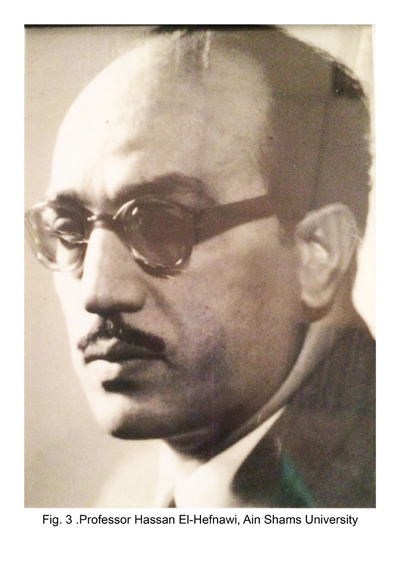About Egypt
Egypt is a transcontinental Mediterranean country spanning from the northeast corner of Africa to the southwest corner of Asia, through a land bridge formed by the Sinai Peninsula. It is the world's only contiguous Eurafrasian country and a large part of Egypt's territory of 1,010,000 square kilometers (390,000 sq mi) lies within the Nile Valley. Egypt is a Mediterranean country and is bordered by the Mediterranean Sea to the north, Gaza Strip to the northeast, the Gulf of Aqaba to the east, the Red Sea to the east and south, Sudan to the south and Libya to the west. With over 88 million inhabitants, Egypt is the most populous country in North Africa and the Arab World, the third-largest in Africa, and the fifteenth-most populous in the world. As one of the world's first nation states, Egypt arising in the tenth millennium B.C, has one of the longest histories of any modern country. Ancient Egypt, which is considered the cradle of civilization, experienced some of the earliest developments of writing, agriculture, urbanization, organized religion and central government in history [1].
Ancient Medicine and Dermatology in Egypt
Ranging from Egypt of the Pharaohs to the present day, the history of Dermatology and Venereology in Egypt has influences that led to present practice. Throughout the years, Egypt shaded light on Dermatology and Venereology as a separate medical specialty. Egyptian distinguished figures have contributed enormously to the development of the field.
As early as the Ancient Egyptian Empire, about 3500 B.C., hieroglyphic inscriptions and engravings indicated that, many dermatolological diseases were described. Among the diseases mentioned are leg ulcers, the "Nile boil," and leprosy. Elephantiasis of the lower extremities can be recognized in the statue of Pharoh Menthuhotp (2000 B.C.). The swelling involves both feet and the legs to just above his knees. In addition, Archeologists have found definite remnants of the existence of tuberculosis, evidenced by Pott's disease in the spine of a priest of the 21st Dynasty (2500 to 1500 B.C.) [2,3].
Ancient Egyptians had prescribed medicines in ointments and poultices for local application. They used animal oils, salt, alabaster, and sour milk to improve the appearance of skin [4]. Cleopatra was reputed to take milk baths, enjoying the cosmetic benefits of lactic acid, the first alpha-hydroxy acid, for softer, smoother skin. Cleopatra also performed hair epilation. This hair removal ritual was usually done with a formula comprised of sugar, oil and limejuice [5].
Botanical dermatology was well known in ancient Egypt. Plants have been known to cause hyperpigmentation since antiquity. As early as 2000 B.C. in Egypt, the juice of Ammi majus (Umbelliferae), false Bishop's Weed, that grows throughout the Nile River valley as a weed, was rubbed on patches of vitiligo after which patients were encouraged to lie in the sun. Even today, Egyptian herbalists sell Aatrillal, a yellowish-brown powder made from Ammi majus seeds for the treatment of leukoderma or vitiligo [6].
As early as 1500 B.C., Egyptian physicians were experimenting with using sandpaper to smooth scars, the first known dermabrasion. By the 1900s, dermatologists began using sandpaper as well as motorized dermabrasion for skin rejuvenation. In 1995, microdermabrasion for mild exfoliation and resurfacing was introduced as a popular, light “polishing” facial peel [4].
Light has played an important role in the treatment of skin disease. Ancient Egyptians used natural sunlight for treating certain skin disorders [4]. Moreover, ancient Egyptians used cold to treat injuries and inflammation as early as 2500 B.C [7]. In addition, ancient Egyptians also used arsenic on the skin to treat cancer [4].
During the Islamic Empire, fixed and mobile hospitals were held in Egypt and were called Alpemmarstan, which is a Persian word composed of two words, the first “Pemmar” meaning patient, and the second, “Stan” meaning place. They had special Pemmarstan for isolation of leprosy patients, and so much advanced medical services, compared to other countries in that era. Sigrid Hunke recognized thanks to medical Arabs on the West, saying, “Each hospital with the arrangements and laboratory and pharmacy warehouse medicines nowadays, but it is, in fact, a memorial monument to the genius of Arab” [8]. The most famous physician and scientist in Egypt in that era is Ibn Nafis, who was the head of physicians in Egypt in the 13th century. He wrote hundreds of medical books, many of them were translated into Latin [9].
The Most Important Egyptian Dermatology, Venereology and Andrology Schools and Hospitals
The foundations of modern medical education in Egypt were laid in the 19th century; the first modern medical school was opened in 1827 at Abu-Zaabal, Cairo, attached to the military hospital. In 1837, it was transferred to Kasr El Aini Hospital in Cairo, which was built in 1466 as a palace where distinguished visitors were invited to Egypt [10]. Later on, El Demerdash hospital was established in 1928 at Ain Shams University Hospitals and is one of the oldest and largest hospitals in Cairo. In 1947, the Faculty of Medicine was established under the title of Ibrahim Pasha University and the name was changed to Ain Shams University in 1954 [11].
Currently, Egypt has more than 20 medical faculties with Dermatology, Venereology and/or Andrology departments offering the highest standards in education, research and patient care. Internal units in these departments include Outpatient Clinics, Inpatient Sections, Phototherapy Units, Cosmetology Units, Dermatologic Surgery Units, Dermatopathology Units, Mycology Units, Laser Therapy Units, and/or Andrology Units.
According to Web Metrics index in February 2015, Cairo University has retained its position among the top five hundred universities in the world in the latest version of the index, which assesses the educational and research services to 25 thousand universities in the world through the Internet. Ain Shams University regained part of the improvement in its ranking from the previous Center Edition, in accordance with the provisions in the development of information systems and technology site. Accordingly, Egyptian higher education institutions are now on the order of 42 in the world, and thus, Egypt occupies the second order in Africa after South Africa, and the second in the Arab world after Saudi Arabia [10].
We have a view to promote dermatology education on both the undergraduate and postgraduate levels, with continued training of professional dermatologists that meet the requirements of communities Worldwide.
In addition to Dermatology and Venereology clinics in the governmental hospitals distributed throughout Egypt, there are several governmental specialized Dermatology and Leprosy Hospitals in several governorates; the largest one is Al Haud Al Marsoud Hospital in Cairo [12].
Eminent Egyptian Figures in Dermatology, Dermatopathology, Venereology and Andrology
More than half a century, the Egyptian scientist, Ibrahim Ragab Fahmy was interested in the book vocabulary Ibn Al-Bitar about this plant Ammi majus plant that grows wild in many parts of the Arab world. It was soaked in lemon and sesame oil and was found useful in the treatment of white spots (Vitiligo or Leucoderma). In 1949, the Egyptian scientist and his colleagues managed to separate several compounds belonging to the group (coumarin); the most important Omoiden compound, and amidine. Then the clinical trials carried out by Professor Abdul Aziz Al Gammal and, later on, Professor Abdel Monem El Mofty demonstrated that the compounds mentioned address vitiligo disease with great success [13].
It was the Egyptian, Professor Abdel Monem El Mofty, Department of Dermatology, Cairo University Medical School (Kasr Al Ainy), who observed plants used in Egyptian folk medicine and began the development of modern photochemotherapy (PUVA) for vitiligo and psoriasis. In the 1940s, he used crystalline methoxsalen (8-MOP, xanthotoxin) followed by sunlight exposure to treat vitiligo [14]. He won the best Arab Doctor Award and was the first Medical Doctor who got Merit Distinction and Republic Distinction in recognition of his scientific efforts (Figure 1).

The Department of Dermatology at Harvard Medical School first successfully treated psoriasis with PUVA in 1974. Today, PUVA is used in the therapy of many other diseases including palmoplantar pustulosis, mycosis fungoides, atopic dermatitis, and generalized lichen planus [14].
During this era, several leaders in Dermatology in Egypt and the Arab world were present. One of them Professor Mohammad El-Zawahry, Professor of Dermatology, Cairo University Medical School (Kasr Al Ainy), born in 1916, who won Mubarak Prize in Science, State Award of Merit, Republic Distinction of the first layer, the Merit Distinction, and First Class Medal of Science. He was the head of the Egyptian Medical Association, and Honorary President of the Egyptian Society of Dermatology [15] (Figure 2).


Professor Hassan El-Hefnawi; born in 1915, is one of the most famous professors of dermatology in Egypt and the Arab world. He is the founder of the Dermatology department Ain Shams University. He described xeroderma pigmentosum and several genodermatoses that causes cancer [16] and was named as a member of several international associations of Dermatology. He became one of the pioneers of Dermatology in Egypt and the Arab world. His scientific research is taught in a large number of universities worldwide. He left a huge medical book that includes 500 outstanding scientific researches in dermatology (Figure 3).
Professor Mohamed Amer, the founder of the Dermatology and Venereology Department, Zagazig University was also the Vice-president of International Society of Dermatology and International Academy of Cosmetic Dermatology, and President of the African Association for Dermatology. He is a Visiting Professor at Thomas Jefferson Medical College, Philadelphia, PA, USA, as well as Tulane University, New Orleans, USA [17], and he is also the president of Cairo Derma Congress.
Professor Micheal Azer was the founder of the Dermatology department, Cairo University. In addition, Professor Foad Al-Areini and Professor Sami Abou-Zeid are considered the founders of the Dermatology Department in Alexandria University, Professor Abdallah Kato greatly contributed to the Dermatology Department in Tanta University, Professor Diaa Abdel-Raheim is considered the founder of the Dermatology Department of Assuit University, and Professor Hassan Abdel-Aal greatly contributed to the Dermatology Department in Al Azhar University.
The field of Dermatology, Venereology and Andrology have been fragmented and separated in the last 30 years. Research dermatology, dermato-histopathology, pediatric dermatology, and the explosion of cosmetic and dermato-surgical techniques have all made their mark on how dermatology is practiced. Several Dermatology, Venereology and Andrology Professors and doctors are well known worldwide nowadays. For example, Professor Mohammad El-Darouti, Kasr Al Ainy (Cairo) School of Medicine, started the field of Dermatopathology, and published several key researches in bullous diseases [18] and mycosis fungoides [19].
Egyptian dermatologists were the leaders in diagnostics and therapeutics of some skin conditions. For example, Professor Hany El-Weshahy, Kasr Al Ainy (Cairo) School of Medicine, used a new technique in cryotherapy using cryoneedles [20].
In Andrology and Venereology, Professor Saad Messiha and Prof Anwar El-Etreiby had great contributions to the department in Cairo University Medical School (Kasr Al Ainy). Similarly, Professor Adel Beheiry contributed to the branch in Alexandria University.
New breakthroughs in Dermatology, Venereology, and Andrology research continue with many Egyptian respectable published contributions (www.pubmed.com).
Important Dermatology, Venereology and Andrology Journals and Books
Egyptian Journal of Dermatology and Venereology, a publication of The Egyptian Society of Dermatology and Venereology started in 1993, By Prof. Mohammad Abdelraheem Abdallah, Ain Shams University. Currently, it is a peer-reviewed online journal with semiannual print on demand compilation of issues published [21]. The journal’s full text is available online at http://www.ejdv.eg.net.
The Journal of The Egyptian Women's Dermatologic Society (JEWDS) was founded by Professor Zenab El-Gothamy, Ain Shams University, in 1990s. JEWDS welcomes online submission from the entire world. JEWDS encourages Egyptian dermatological researchers to publish their valuable reviewed scientific work to be visible across the globe through JEWDS website www.jewds.com and OVID [22]. Meanwhile Professor El-Gothamy is one of the most famous Egyptian experts in the field of mycology and dermatopathology.
Egyptian Dermatology Online Journal started in 2005 with Honorary Editor: Arthur C Huntley, MD (USA), and Senior Editor: Prof. Hany El-Tonsy, Al-Minya University [23].
It is worth mentioning that Prof. Mohammed Nada, Kasr Al Ainy (Cairo) School of Medicine is the founder for Journal of Pan Arab League of Dermatologists, that started in 2004 [24].
Professor Kamal Zaki Shaeer, Kasr Al Ainy (Cairo) School of Medicine is the founder of Egyptian Journal of Andrology and Reproduction; that started in 1986 [25], and was recently renamed “Human Andrology”.
Professor Mohsen Soliman, Cairo University, is also the founder of the Egyptian Journal of Dermatology and Andrology.
Almost all Dermatology, Venereology and/or Andrology departments in Egyptian Universities publish undergraduates’ book(s), and several Professors published their own books and atlases.
Some Egyptians contributed to valuable international Dermatology, Venereology and/or Andrology textbooks, as well. Professor Mohammad Abdelrahim Abdallah contributed to Dermatology Textbook, by Foreign Body Reactions Chapter [26]. In addition, Dr. Bassel Mahmoud, Ain Shams University contributed to several Dermatology books such as: BASIC SCIENCES, McGraw-Hill [27]. Professor Kamal Zaki Shaeer, Kasr Al Ainy (Cairo) School of Medicine contributed to the Text Book of Erectile Dysfunction, 2009 [28].
Dermatology and Andrology Societies in Egypt
The Egyptian Society of Dermatology and Venereology dates back to the 1970s and grow over the years with the hard effort of its general secretaries; Professor Aly Abdel Fattah, Ain Shams University; Dr. Kamal Attia, head of the Dermatology department Maadi Military Hospital; Professor Mohamed Nada, Cairo University; Professor Abdel Moneim Abdel Aal, Azhar University and Professor Abdel Rahim Abdallah, Ain Shams University [21].
The Egyptian Women’s Dermatologic Society (EWDS) was founded in 1990s by Professor Zenab El-Gothamy, Ain Shams University. Members of the society are female dermatologists from different hospitals of ministry of health and universities of Egypt. It performs therapeutic convoys to many poor areas of Egypt; and raises the awareness of women and other family members about skin diseases and protection against skin infections [22].
Professor Kamal Zaki Shaeer, Kasr Al Ainy (Cairo) School of Medicine is the founder of Egyptian Society Andrology, 1986; Pan-Arab Society of Andrological Science., 1993; and Pan-Arab Society of Sexual Health and Research, 1998 [28].
Other societies include the Egyptian Afro-Asian Society for Cosmetic Dermatology and Laser, with Professor Ahmed Salem, Kasr Al Ainy (Cairo) School of Medicine, is the president. In addition, the Egyptian Society of Dermatosurgery, with Professor Mohammad Hassan El Hefnawi, Ain Shams University, is the president.
In some governorates, Dermatology and Venereology Societies are also present, such as Alexandria Society of Dermatology and Venereology and Delta Society of Dermatology and Venereology.
Most of these societies offer scientific, cultural, educational and social services through conferences, as well as symposia, seminars and training courses for different aspects of dermatology.
Egypt has a special contribution to regional and international societies of Dermatology as well, such as Pan Arab League of Dermatologists [24]. Pan Arab Association of Dermatology and Leprosy was founded by Professor Saleh El Shiemy, Ain Shams University. Professor Mohamed Amer, Dermatology and Venereology Department, Zagazig University is the Vice-president of International Society of Dermatology, Tropical, Geographic and Ecologic, and President of the African Association for Dermatology.
Several Egyptian Dermatology and Venereology Conferences have international contributions. The most famous is Sharm Derma [29] (The international Conference for Dermatology and Cosmetology in Sharm El Sheikh) founded by Professor Assem Farag, Banha University. Also Arab European Congress of Dermatology and Venereology is held in conjunction with the Annual Congress of the Egyptian Society of Dermatology and Venereology. In addition, Egyptian Society of Dermatology and Venereology International Annual Conference is held in Collaboration with European society for pediatric dermatology.
Egypt hosted several international conferences including the VIII International Congress of Dermatology, Cairo, 16-21 April 1999 [30]. Cairo derma IV hosted the 7th World congress of IACD, which was a unique event in the Middle East in 2014. This event was a mixture of Dermatology, cosmetics and Dermatologic surgery for the first time in the Middle East [31].
The modern practice of dermatology, cosmetic dermatology, dermatologic surgery and andrology continues to be one of the fastest growing specialties with fascinating breakthroughs. Egyptians’ contributions are continuing the advancement with state-of-art medical expertise and state-of-heart patient care.
References
- http://en.wikipedia.org/wiki/Egypt
- Mikhail GR, Falk MS (1952) Dermatology in Egypt. AMA Arch Derm Syphilol 65: 20-34.
- Crissey JT. Parish LC, Holubar K (2002) Historical Atlas of Dermatology and Dermatologists Hardcover –2002.
- http://www.dermatology-center.com/dermatology-resources-thousand-oaks/history/
- França K, Ledon J, Savas J, Nouri K (2014) Women in medicine and dermatology: History and advances. An Bras Dermatol 89: 182-183. [Crossref]
2021 Copyright OAT. All rights reserv
- http://telemedicine.org/botanica/bot5.htm
- Freiman A, Bouganim N History of cryotherapy. Dermatology Online Journal 11: 9.
- http://darululoom-deoband.com/arabic/magazine/tmp/1398056390fix4sub5file.htm
- O'Malley CD (1957). A Latin translation of Ibn Nafis (1547) related to the problem of the circulation of the blood", Journal of the History of Medicine and Allied Sciences 12: 248-249.
- 10.www.medicine.cu.edu.eg/
- www.asu.edu.eg
- http://www.mohp.gov.eg/Guidelines/hospitals.aspx
- http://arab.islamicmedicines.com
- http://www.scribd.com/doc/21685611/Disorders-of-Pigmentation-1#scribd
- http://www.ahram.org.eg/Archive/2004/8/14/WAFY1.HTM
- El-Nasr HS, El-Hefnawi H, Mohareb R, El-Komy HM (1963) Poikiloderma Congenitale. (Rothmund--Thomson Syndrome). J Egypt Med Assoc 46: 1219-1233. [Crossref]
- http://210.101.116.28/W_files/kiss8/27718896_pv.pdf
- El-Darouti MA, Hegazy RA, Abdel Hay RM, El Hawary MS, Tawdy AM, et al. (2014) Study of T helper 1 and T helper 2 responses in pemphigus vulgaris patients receiving interferon alpha 2a injections in addition to a standard protocol therapy: a randomized controlled trial. Arch Dermatol Res 307: 299-307. [Crossref]
- El-Darouti MA, Marzouk SA, Bosseila M, Zeid OA, El-Safouri O, et al. (2006) Microscopic study of normal skin in cases of mycosis fungoides. Int J Dermatol 45: 1043-1046. [Crossref]
- Weshahy AH (1993) Intralesional cryosurgery. A new technique using cryoneedles. J Dermatol Surg Oncol 19: 123-126. [Crossref]
- http://www.ejdv.eg.net
- www.jewds.com
- www.edoj.org.eg
- http://www.arab-derma.com/pald_journal_new.html
- http://www.atfalanabeeb.com/
- Abdallah MA. Foreign Body Reactions. In: Dermatology Textbook, Mosby Elsevier.
- Bassel Mahmoud (2014): BASIC SCIENCES. In. Asra Ali (Ed.) 3rd edition of McGraw-Hill Specialty Board Review Dermatology: A Pictorial Review. McGraw-Hill. Chapter 28.
- Kamal Zaki Mahmoud Shaeer (2009) The Role of Alprostadil in the Diagnosis and Treatment of Erectile Dysfunction: Experience with Self–Injection in Egypt, Text Book of Erectile Dysfunction.
- www.sharmderma.net.
- http://www.stmina-monastery.org/stantonios/mc/icd99/haud.htm
- http://www.cairoderma.com/aboutus.php?id=13



